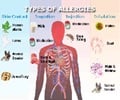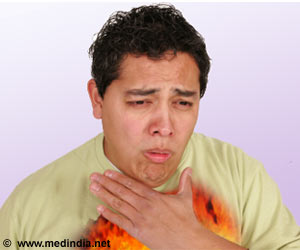It is important to label the Food packaging that contains latex, which will certainly prevent the allergic to avoid contact. A novel study conducted in the UK
It is important to label the Food packaging that contains latex, which will certainly prevent the allergic to avoid contact. A novel study conducted in the UK showed that nearly a third of food packaging was containing unhealthy levels of latex, and in a certain chocolate biscuit, the quantity of latex was so high to have triggered an allergic reaction.
A group of experts from the UK Latex Allergy Support Group (LASG) Advisory Panel said that these results were significant. 'For a few people, natural rubber latex is a very potent allergen and for these individuals, there is no safe level of exposure,' says LASG representative Graham Lowe. 'We would welcome an approach to the EU to consider this evidence and the issue of labelling,' he said. Lowe added that latex transfer to food could account for some currently inexplicable reactions.There is no agreement on a safe level of latex, but it has been reported that a billionth of a gram (1ng/ml) can be enough to cause a reaction. Currently manufacturers are not required to label food packaging as containing latex. Scientists at Leatherhead Food International measured the presence of four major latex allergens in 21 types of food packaging for confectionary, fruit and vegetable produce, meat, pastry and dairy products. A third of the materials tested gave positive results for the presence of latex and in some cases this was transferred onto the food (Journal of the Science of Food and Agriculture DOI 10/1002/jsfa.2580).
The highest levels of latex allergens were found in a chocolate biscuit containing nearly 20ng/ml. The wrapper contained 85ng/ml of latex. The highest levels in packaging were detected in ice cream wrappers, with over 370ng/ml found in one sample. The ice cream itself contained around 14ng/ml. One company admitted spraying whole wrappers with latex adhesive, so that they could be sealed with minimum wastage.
A spokesperson for the Food Standards Agency, which funded this study, said food-labelling guidelines were designed to avoid restriction of choice due to excess use of warning labels. 'Advisory labeling should only be used when, following a thorough risk assessment, there is a real risk of allergic reactions,' they said. The Leatherhead study is the first attempt to quantify the latex allergens present in food contact materials and also in foods.
Between 1-6% of the British population suffer from latex allergies. Latex is used in many food packaging materials, including rubber bands, meat netting, stickers found on some fruit and vegetables and the adhesive used for cold sealing of confectionary.
Source : Eureka Alert











